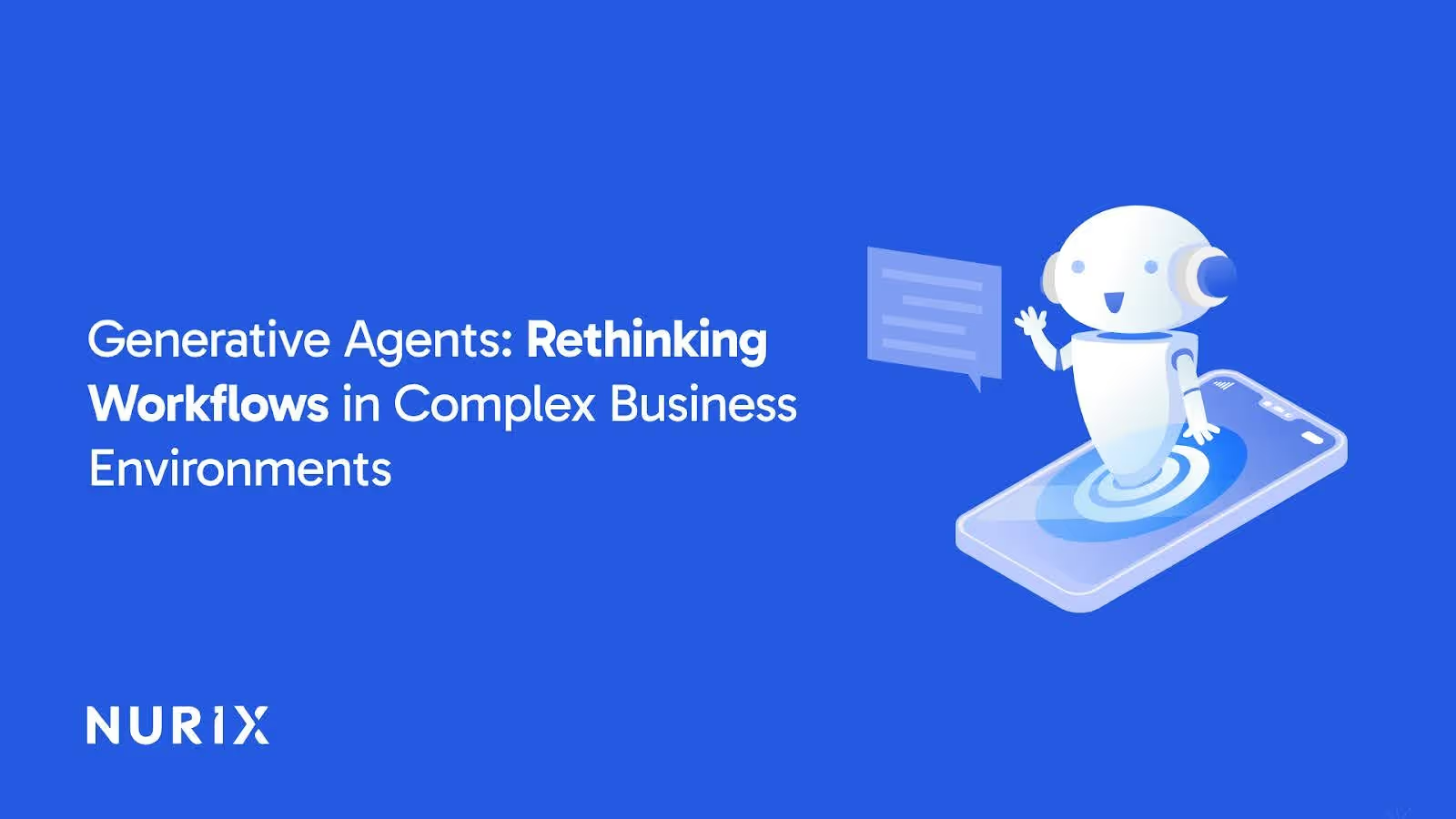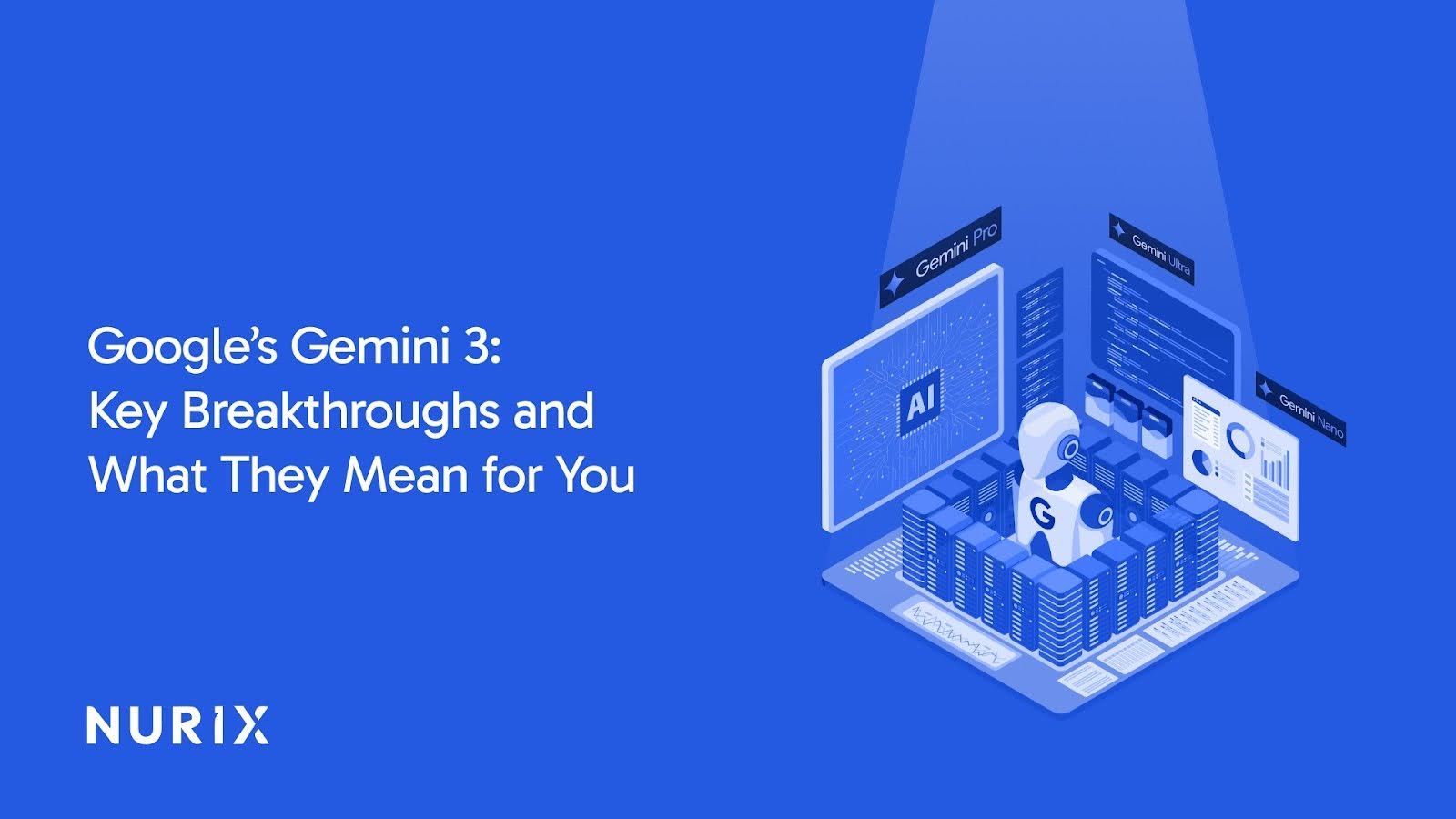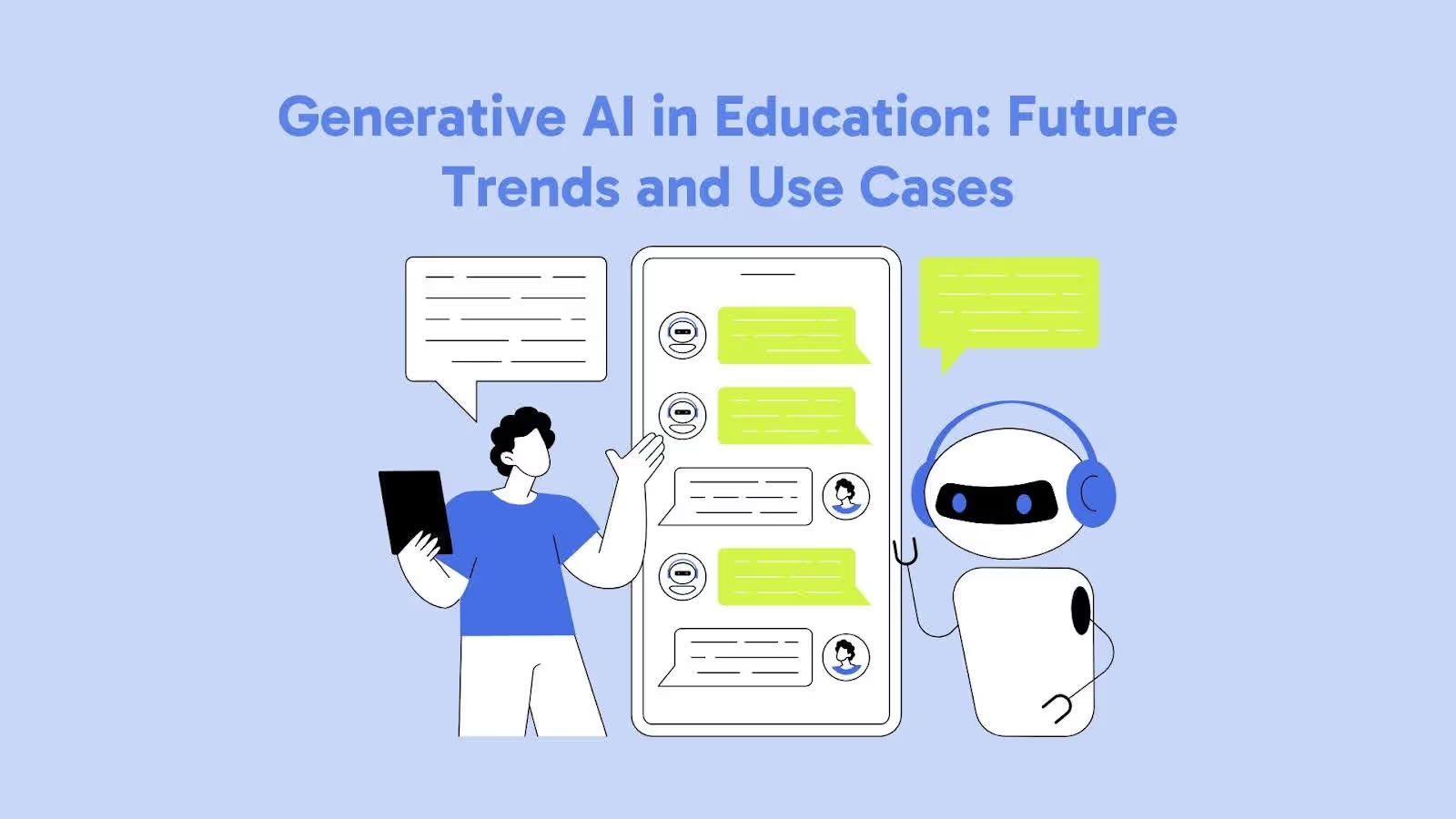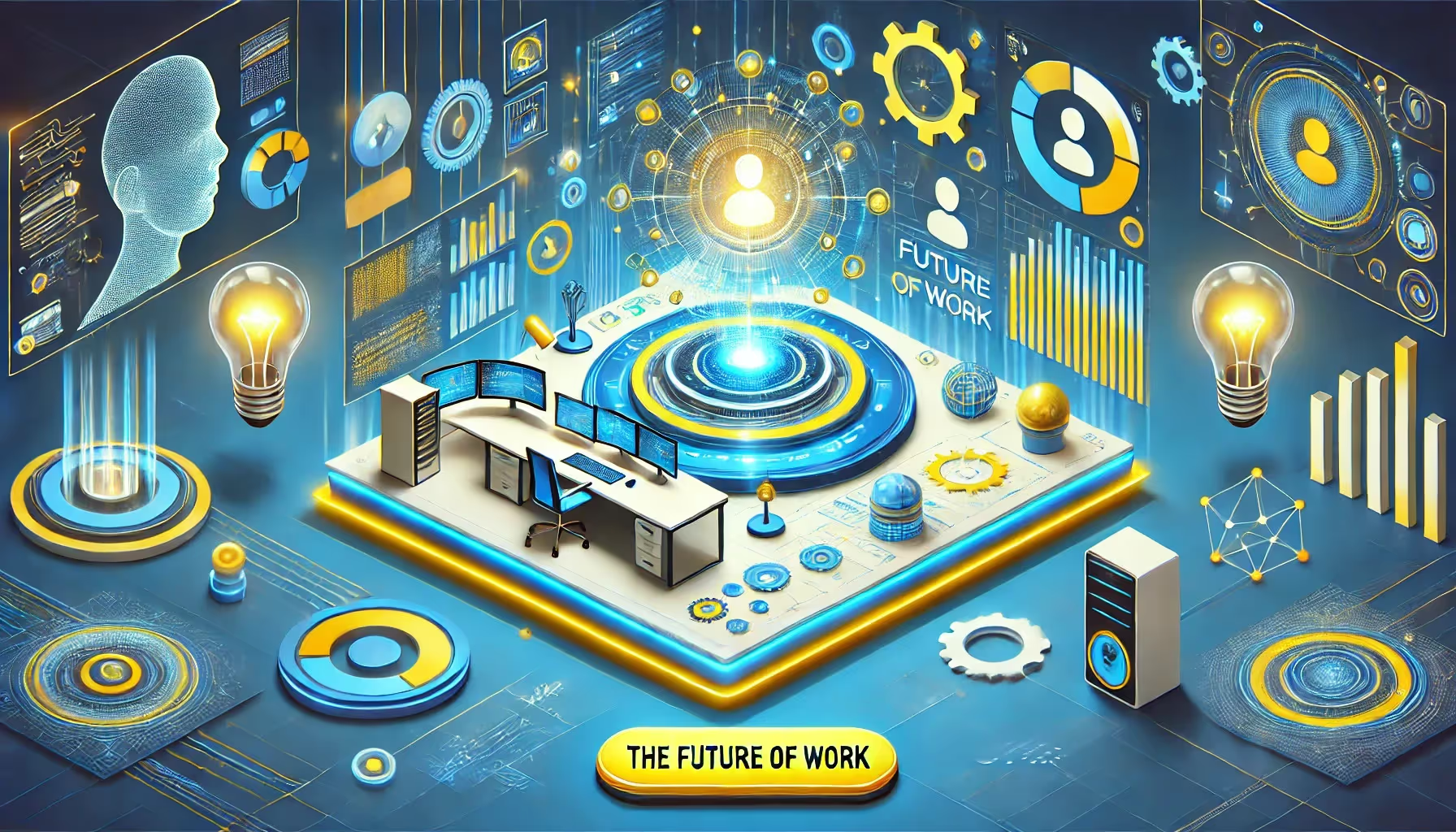Businesses today wrestle with complexity in ways that traditional work methods weren’t built to handle. Fragmented tools, siloed teams, and rigid processes slow down decision-making and drain energy from the very people expected to drive progress. The result is a constant scramble, firefighting simple tasks, chasing down information, and struggling to keep pace with changing demands.
The challenge goes beyond adopting new technology, it’s a shift in how work gets done. Generative agents break from the past, acting as active collaborators that understand, plan, and execute complex tasks with little supervision. This calls for rethinking roles, workflows, and what automation can truly achieve.
This article cuts through the noise to clarify where generative agents fit in today’s enterprises. Understanding their strengths and limits will help you decide when and how to adopt them as partners in your complex work.
What Are Generative Agents?
Generative agents are AI systems that act autonomously in changing environments. Unlike rule-based AI, they use foundation models trained on vast data to adapt and respond in real time.
They interpret natural language instructions, break down complex goals into subtasks, and assign these to specialized modules that collaborate to complete the task. Their learning from interactions improves flexibility and reliability over time.
In essence, generative agents combine:
- Planning: They map out the steps needed to achieve a complex objective.
- Task delegation: They assign subtasks to specialized agents or digital tools.
- Adaptation: They adjust actions based on new inputs or changes in context.
- Learning: They improve performance through iterative feedback loops.
This marks a clear departure from static chatbots or simple automation scripts, offering AI that acts more like a knowledgeable coworker than a tool.
Generative agents mark a shift from simple automation to intelligent collaboration, changing how businesses approach complex tasks. Their growing influence calls for a fresh perspective on what drives value and efficiency in the workplace.
Why Generative Agents Matter for Business
Many business processes are complex, unpredictable, and involve multiple stakeholders and systems. Think of planning a business trip, underwriting a loan, or managing a marketing campaign. These tasks often require juggling dozens of variables, interpreting ambiguous instructions, and handling exceptions, all challenges for traditional automation.
Generative agents address these challenges in several important ways:
Economic Impact and Value Creation:
The generative AI market is expected to grow at a compound annual growth rate (CAGR) of 36.99% between 2025 and 2031, reaching a market volume of approximately US$442.07 billion by 2031. This rapid expansion highlights the increasing adoption and influence of generative AI across industries.
Enhanced Customer Experience Applications:
- AI-powered chatbots and virtual assistants streamline customer self-service processes while reducing operational costs by automating responses for customer service queries.
- Conversational analytics can analyze unstructured customer feedback from surveys, comments, and call transcripts to identify key topics, detect sentiment, and surface emerging trends.
- Agent-assist technologies can enhance service representative performance through task automation, summarization, and providing customized product recommendations.
Cost Reduction and Process Efficiency:
By automating repetitive tasks across various domains such as customer service, data entry, manufacturing, and logistics, generative AI enables organizations to streamline operations, reduce costs, and allocate resources more effectively.
Boosting Employee Productivity and Workplace Transformation:
- Employee assistant tools improve productivity by helping staff quickly find accurate information, get answers, summarize and create content through conversational interfaces.
- Code generation capabilities accelerate application development with context-aware suggestions.
- Automated report generation reduces time spent on financial reports, summaries, and projections while minimizing errors.
Decision Making and Analytics Enhancement:
- AI algorithms combined with predictive analytics enable businesses to analyze historical data, identify patterns, and forecast future trends.
- These capabilities improve decision making across customer behavior prediction, supply chain optimization, and risk mitigation.
- Generative AI can discover new insights that drive innovation and competitive advantage.
Data Management and Processing:
- Document processing capabilities improve business operations through automatic extraction and summarization of data.
- Data augmentation generates synthetic data to train machine learning models when original datasets are small, imbalanced, or sensitive.
- Supply chain optimization evaluates different scenarios to improve logistics and reduce costs.
Human-Machine Collaboration Framework:
Generative AI enhances human abilities by enabling close teamwork between people and machines. This allows employees to concentrate on creative, strategic, and emotionally nuanced work, while AI takes care of repetitive, routine tasks efficiently.
The true power of generative agents lies not just in their potential, but in how they operate within real-world environments. Seeing their practical application reveals the depth of change they bring to everyday business.
How Generative Agents Work in Practice
Generative agents operate at the intersection of advanced AI and real-world complexity, transforming abstract commands into coordinated actions. Understanding how they work in practice reveals their potential to rethink workflows and redefine collaboration.
Here’s a closer look at the key ways generative agents function in business settings:
- Interaction
People interact with these agents in natural ways. For example, you might type a request, speak to a voice assistant like Alexa, or use a touchscreen. The newest systems support natural conversations through speech, and soon, they will recognize gestures and facial expressions.
Imagine telling a virtual assistant to “book me a flight” just by speaking or even gesturing, making the interaction effortless and intuitive.
- Processing
When the agent receives your input, it translates your words into a form the computer can understand. It then uses powerful language models trained on huge amounts of data to find the best answer.
For example, a financial AI agent might analyze recent market trends and your portfolio details before advising you on investment options. Retrieval-augmented generation technology helps by pulling in up-to-date information from trusted sources, so responses are both relevant and accurate.
- Response
Once the answer is ready, the agent communicates it back in ways that feel natural. This might be a written summary, a spoken reply, or even an animated avatar that speaks with synchronized lip movements and facial expressions.
For instance, a healthcare virtual assistant could explain your medication schedule through clear speech and reassuring gestures, making the experience more engaging and easier to understand.
The mechanics of generative agents set the stage for transformation, but it’s their real-world applications that reveal their true impact. These use cases demonstrate how theory translates into tangible change across industries.
Use Cases That Highlight Generative Agents’ Potential
Generative agents challenge our assumptions about what machines can handle, stepping into roles that require judgment, nuance, and collaboration. Exploring their real-world use cases uncovers a glimpse of how work itself may be fundamentally redefined. Here are key examples that illustrate this shift:
- Automated Customer Support and Live Assistance
Generative agents power chatbots and virtual assistants that provide instant, human-like responses to customer queries, reducing wait times and improving satisfaction by handling tasks such as check-ins, tracking, and troubleshooting.
- Personalized Customer Interactions
These agents analyze previous interactions, preferences, and purchase history to deliver customized recommendations and responses, enhancing customer engagement and loyalty in sectors like retail and banking.
- Boosting Agent Productivity
Generative AI assists human agents by suggesting relevant replies, automating note-taking, and summarizing customer interactions, allowing staff to focus on complex issues and improving overall efficiency.
- Automating Post-Call Processing
Agents use generative AI to automatically summarize customer calls and interactions, streamlining documentation, reducing after-call work, and ensuring accurate records for future reference.
- Streamlining Call Transfers and Escalations
Generative agents provide concise summaries of previous interactions to new agents during transfers, ensuring customers don’t have to repeat themselves and improving the efficiency of escalations.
- Healthcare Applications: Diagnostics and Imaging
In healthcare, generative agents analyze medical images, assist in diagnostics, and generate synthetic data for training, leading to faster and more accurate diagnoses.
- Accelerating Drug Discovery and Development
Generative AI models simulate molecular interactions, propose new drug candidates, and design clinical trials, significantly speeding up pharmaceutical research and development processes.
- Personalized Medicine and Treatment Planning
These agents process genetic, lifestyle, and medical data to suggest individualized treatment plans and optimize drug dosing, improving patient outcomes in fields like oncology.
- Clinical Documentation and Workflow Automation
Generative agents automate the creation of clinical notes and documentation, reducing administrative burden for healthcare providers and allowing more focus on patient care.
- Predicting Drug Interactions and Biomarker Discovery
Generative AI forecasts potential drug-drug interactions and identifies disease-related biomarkers, supporting safer therapies and more precise, targeted treatments.
Concepts gain clarity when grounded in reality; the potential of generative agents becomes undeniable through concrete examples. These real-life cases showcase how theory turns into action with measurable results.
Real-life Examples of Generative Agents
Generative agents are no longer just theoretical, they’re actively shaping complex processes across industries. These real-life examples highlight their growing role as intelligent collaborators in today’s work.
Here are some concrete instances showcasing their impact:
- Nurix AI: Automated Customer Support for Cult.fit
Nurix AI deployed custom AI agents for Cult.fit, enabling 80% faster query resolution and scaling customer support with intelligent, always-on assistance. The solution integrated smoothly with existing workflows, reduced human error, and delivered 100% ROI by automating repetitive support tasks and freeing up human agents for more complex cases.
- Nurix AI: Social Media Support for super.money
super.money uses Nurix’s generative agents to streamline social media customer support. The AI system provided faster, more personalized responses aligned with the brand voice, reducing response times and improving customer satisfaction on digital channels.
- Healthcare: AI-Powered Clinical Documentation (Nuance DAX Copilot)
Nuance DAX Copilot uses generative AI agents to automatically document patient visits by listening to doctor-patient conversations, generating accurate clinical notes, and integrating them into electronic health records. This reduces administrative burden and allows clinicians to focus more on patient care.
- Finance: AI Agent for Loan Processing (JPMorgan’s COiN Platform)
JPMorgan’s COiN platform uses generative AI agents to review and interpret commercial loan agreements, automating a process that previously took thousands of hours. This boosts efficiency, reduces errors, and accelerates loan approvals.
Seeing generative agents in action highlights both their promise and the complexities they introduce. Preparing thoughtfully is essential for leaders aiming to navigate this evolving landscape effectively.
Preparing for Generative Agents: What Leaders Should Focus On
As generative agents reshape how work unfolds, leaders must rethink strategy, culture, and infrastructure to take advantage of their full potential. Focusing on key preparation areas will determine who leads this next wave of change.
Here are essential steps leaders should prioritize:
- Strategic Alignment & Governance
Create cross-functional AI councils to align generative agent projects with business goals and regulations. Develop dynamic roadmaps balancing innovation with risk management, using real-time compliance monitoring.
- Ethical AI Frameworks & Transparency
Set up bias audits and explainability standards using tools like algorithmic impact assessments. Publish transparency reports on decision-making and data sources to build stakeholder trust.
- Workforce Evolution & Responsible Scaling
Invest in AI literacy and ethical oversight training. Redesign roles to emphasize human-AI collaboration, and manage change through upskilling and open communication about job impacts.
- Robust Data Infrastructure
Build data lakehouses with metadata tagging to ensure clean, auditable data while complying with GDPR/CCPA. Use retrieval-augmented generation (RAG) to ground agent outputs in verified company knowledge.
- Continuous Adaptation Mechanisms
Establish automated feedback loops from user input, performance data, and regulations for ongoing model updates. Deploy AI observability tools to monitor ethics, performance, and sustainability throughout the lifecycle.
Preparing for generative agents demands foresight, but no plan is complete without confronting the risks they bring. Balancing opportunity with caution is crucial for sustainable success.
Challenges and Risks to Keep in Mind
Generative agents bring promise but also complex challenges that test trust, ethics, and control. Recognizing these risks is vital for responsible adoption and long-term success.
Here are the key challenges and risks to consider:
- Bias and Ethical Risks: Agents can unintentionally produce biased, misleading, or harmful content due to their training data and autonomy, making fairness and transparency ongoing concerns.
- Data Privacy and Security: Handling vast sensitive data exposes organizations to privacy breaches, regulatory risks, and cyberattacks, demanding strong governance and security practices.
- Trust and Explainability: The opaque “black box” nature of these agents limits understanding of their decisions, reducing user trust and increasing the need for clear audit trails and fail-safes.
- High Costs: Significant computational resources drive up costs, posing barriers for smaller businesses aiming to scale generative agent deployments.
- Talent Shortage: Lack of in-house AI expertise, especially in ethics, security, and compliance, slows adoption and heightens dependence on outside vendors.
- Regulatory Uncertainty: Evolving laws, particularly in finance and healthcare, make compliance complex and a moving target for businesses using generative agents.
- Integration and Scalability Challenges: Connecting agents with legacy systems and scaling pilots to enterprise-wide use remain major operational hurdles for many organizations.
How Nurix AI’s Generative Agents Can Help Businesses
Nurix AI offers a suite of generative AI agents designed to transform enterprise workflows by automating complex tasks, enhancing customer interactions, and integrating smoothly with existing systems. Here's how Nurix AI can assist your organization:
- Custom AI Agents: Developed to meet specific business needs, these agents handle tasks across sales, customer support, and operations, ensuring alignment with your company's objectives.
- Multimodal Capabilities: Support for both text and voice interactions allows for natural communication with customers and employees, enhancing engagement and satisfaction.
- Smooth Integration: Nurix AI agents integrate smoothly with existing enterprise systems, such as CRMs and ERPs, facilitating smooth data flow and interoperability.
- Proactive Task Execution: Agents can autonomously manage workflows, reducing the need for constant human oversight and improving operational efficiency.
- Advanced Voice Capabilities: Utilizing low-latency, human-like voice models, Nurix AI ensures clear and effective communication, even in vernacular languages.
Final Thoughts!
Generative agents challenge everything we’ve assumed about work, productivity, and collaboration. They don’t just automate tasks, they change the nature of those tasks and the roles we play in completing them. This shift demands more than curiosity or incremental change; it calls for a fundamental reexamination of how value is created in organizations.
The future won’t wait for those who hesitate. The question is not if generative agents will reshape enterprises, but how those who embrace this shift will redefine success on their own terms. It’s a moment to decide whether to cling to old patterns or to imagine new possibilities, and then act decisively.
Nurix AI’s generative agents handle routine tasks efficiently, reduce errors, and improve response times, freeing your team to focus on strategic priorities. Experience greater accuracy, faster service, and smooth integration with your existing systems. Get in touch with us!












